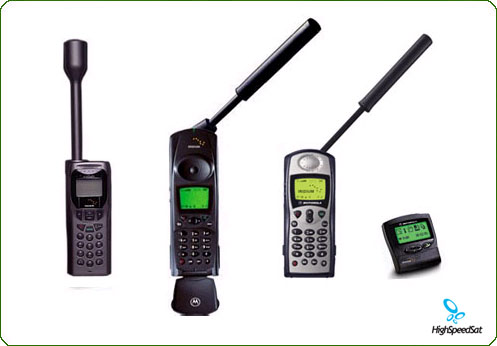Iridium: An Indecent Proposal on Alexander Graham Bell’s Birthday
Globalstar has 50 mhz, and the Iridium low-earth, non-stationary orbiting satellite communications array is in possession of 25,5 mhz of bandwidth which can reach any stationary or moving object in virtually the entire planet without a directional antenna. Designed as system of global satellite telephony systems, they also provide low speed data tx/rx to remote and unconnected areas of the world such as at sea and at great distances away from the nearest fixed lines or cellular tower. They could also be used for much more
 At the same time in many parts of the world the precious slice of the L- and S-bands that the Iridium, Inmarsat and Thuraya satellite are competing with regional efforts to implement mobile one-way media delivery systems in a cost effective manner after the fashion of Sirius and XM in North America, and to a similar degree to the Worldspace radio and data delivery system covering Africa, portions of Asia, Europe, and soon in South America.
At the same time in many parts of the world the precious slice of the L- and S-bands that the Iridium, Inmarsat and Thuraya satellite are competing with regional efforts to implement mobile one-way media delivery systems in a cost effective manner after the fashion of Sirius and XM in North America, and to a similar degree to the Worldspace radio and data delivery system covering Africa, portions of Asia, Europe, and soon in South America.
This excellent and more modest proposal from Australia found a way to answer the question as to who something like Sirius or XM could be provided in Australia, but the same could clearly be done in other regions and the diameter of the drinking straw it’s delivered through could actually provide a good bit more on the global level.
 In fact there is a lot of capacity, most of which goes unused over the world’s highly developed or moderately developed and populated land mass. Using what could be done with Iridium’s 25,5 mhz of capacity, a great deal is possible for all 4 of those providers which could reflect light into the areas of the world shaded from the information age, provide travelers and migrants worldwide with access to news, culture, music , and sports wherever they are, and solve a nettlesome frequency allotment problem that developed regions have been struggling with the UN hosted dinosaur-like ITU / IBU to resolve.
In fact there is a lot of capacity, most of which goes unused over the world’s highly developed or moderately developed and populated land mass. Using what could be done with Iridium’s 25,5 mhz of capacity, a great deal is possible for all 4 of those providers which could reflect light into the areas of the world shaded from the information age, provide travelers and migrants worldwide with access to news, culture, music , and sports wherever they are, and solve a nettlesome frequency allotment problem that developed regions have been struggling with the UN hosted dinosaur-like ITU / IBU to resolve.

* A format in between Standard Definition (640 x 480) and Low Definition (320 x 240), say 480 X 360 pixels x a 25 (in lieu of 30) fps would requires only 47% of the (nominal) 3 mbits/sec capacity of a SD television channel, and could fit inside of 0,8 mhz of the delivery systems conduit using mpeg-4, AVC. Moreover, if the content is delivered at a compressed rate over the whole of the bandwidth allotted to visual content.
Since it’s designed to look for a terrestrial connection first, to a satellite which relays to the public switch, and to a satellite which communicated to another satellite in the array as a last resort, the telephony and wireless IP component can have its’ capacity easily improved by adding more ground stations. This allows for the relief of some of that capacity to construct “regional” XM or Sirius subscriber audio services bundled to serve regional languages and interests, as well as provide a global, multilingual radio and TV delivery mechanism that can be held in the hand, watched and heard in the air, at sea, or middle of the desert or jungle,...
... and not be fully controllable by aggressive governments that opposed the free flow of information,
... and support the profitability of the systems which will allow the satellite array to be completed and enlarged.
And that’s just what’s possible from one of the 4 portable global satellite telephony providers. At lease one of the others could create yet more competition and capacity that that. What’s needed is a range of devices which will take a subscriber SIM or smart card that will use this or any competitor’s delivery mechanism. They could take the form of a PDA that can access all the services except radio and television, shuttling radio only receivers for homes and automobiles, receivers for media distribution in ships and aircraft, a simple medium sized video display for use about a boat or vehicle, or a compact combined device for all the services that might resemble an oversized version of the iPhone or gPhone prototypes, along with all the other asset tracking devices that use GPS and are already in commercial use. In fact the presence of a two-way data system might even permit the customer to use the full service system on a pay-per-use basis.
So there it is, right off of the top of the head and probably in need of a slap to straighten me out. Your opinions please...




0 Comments:
Post a Comment
<< Home